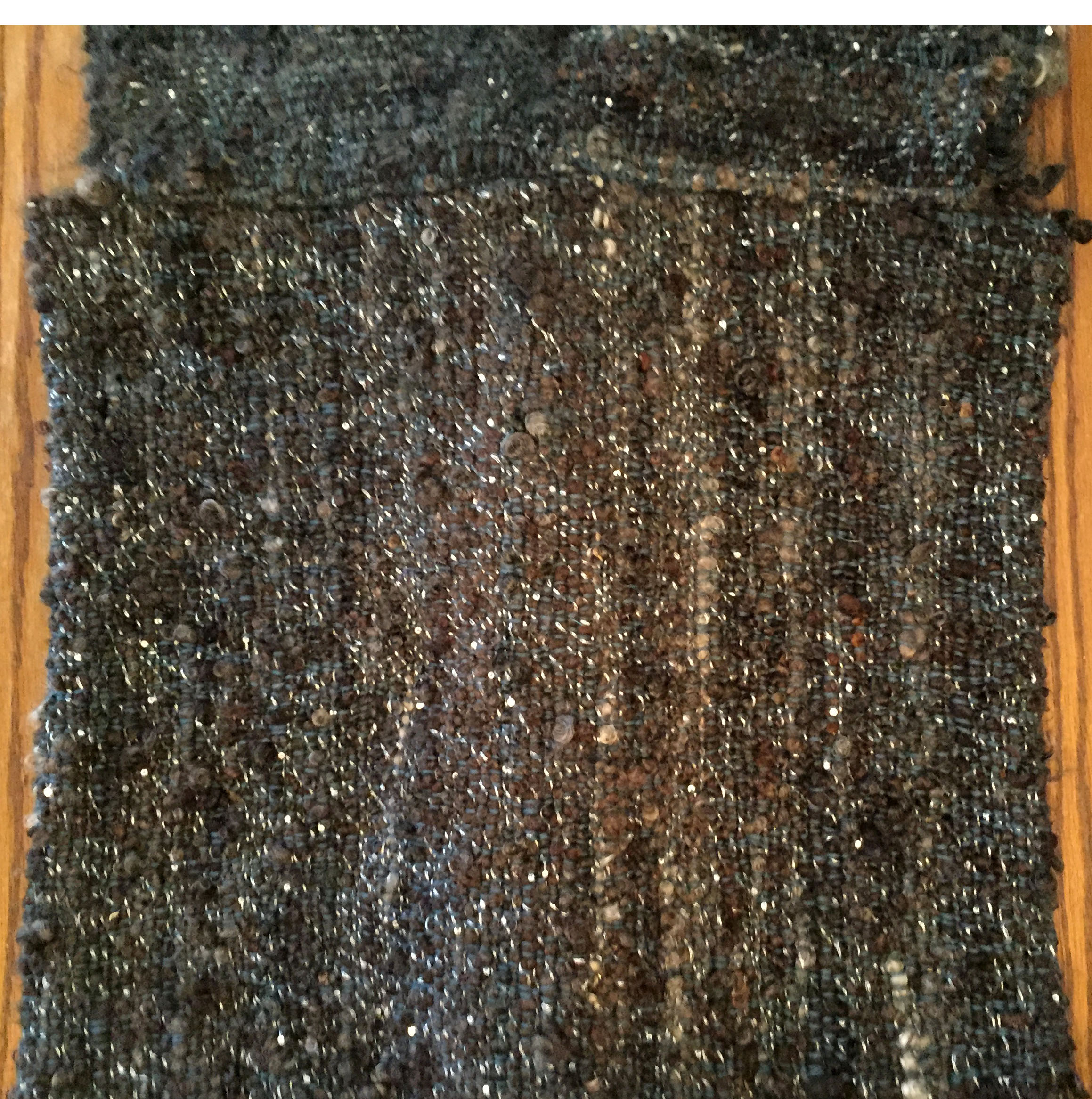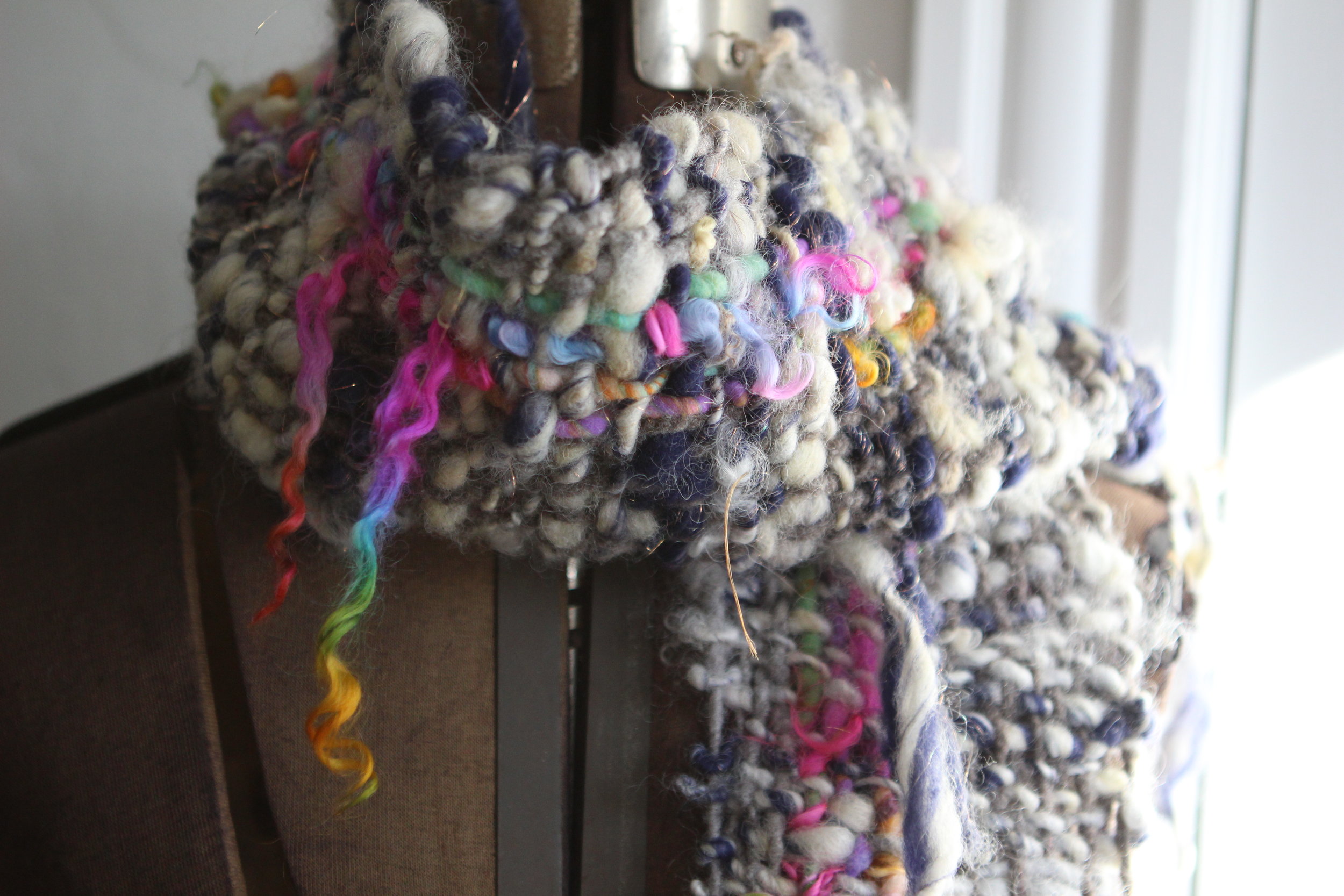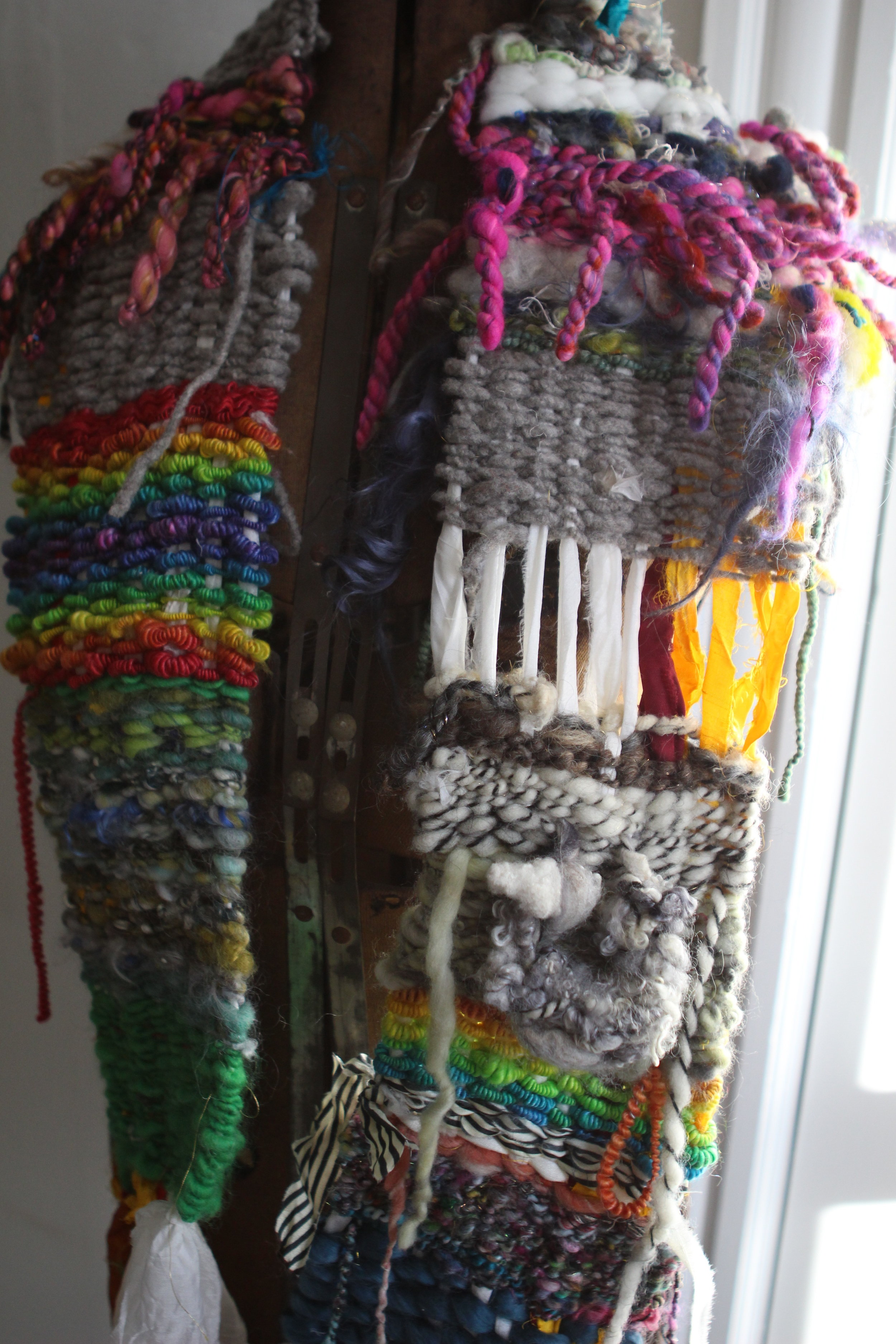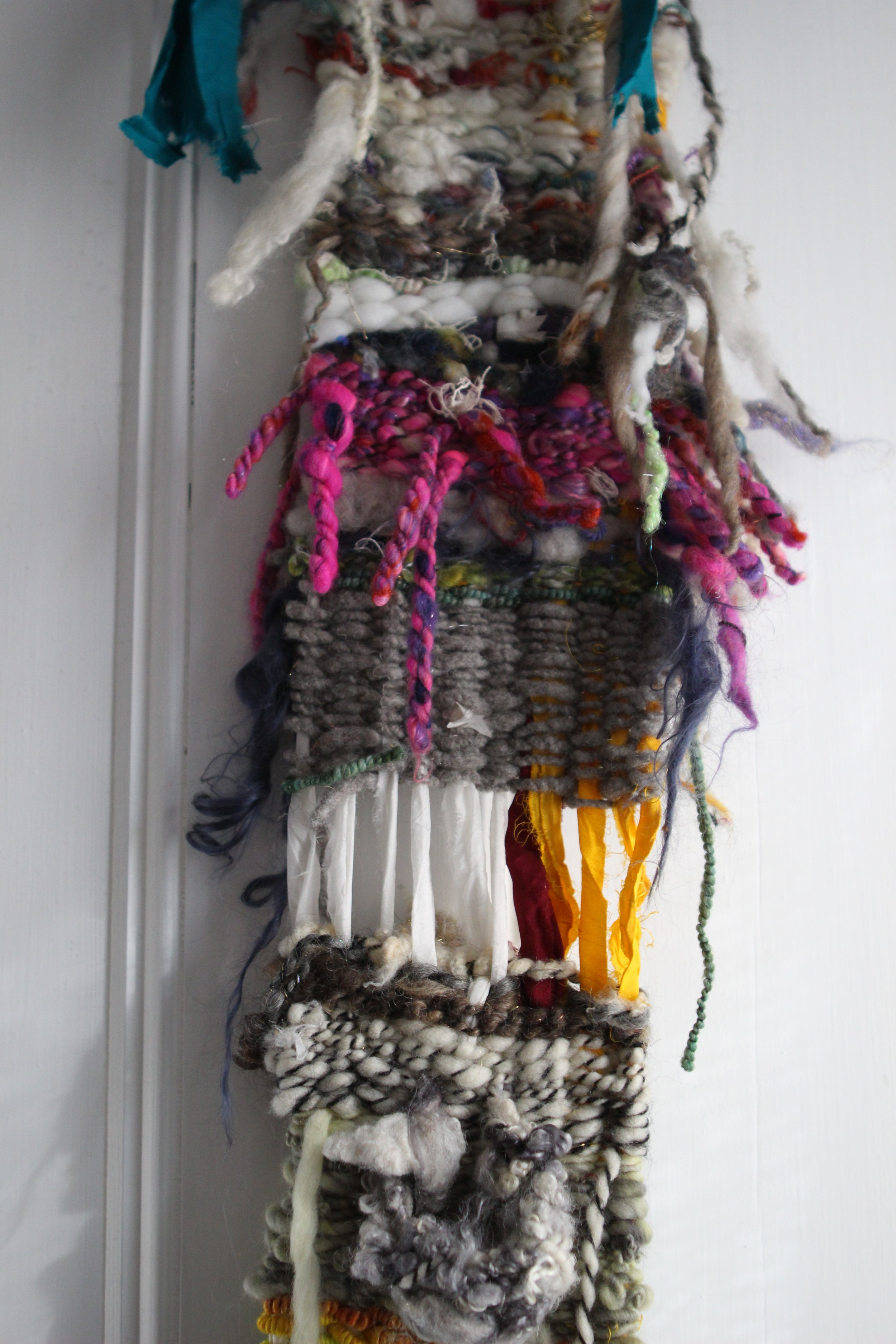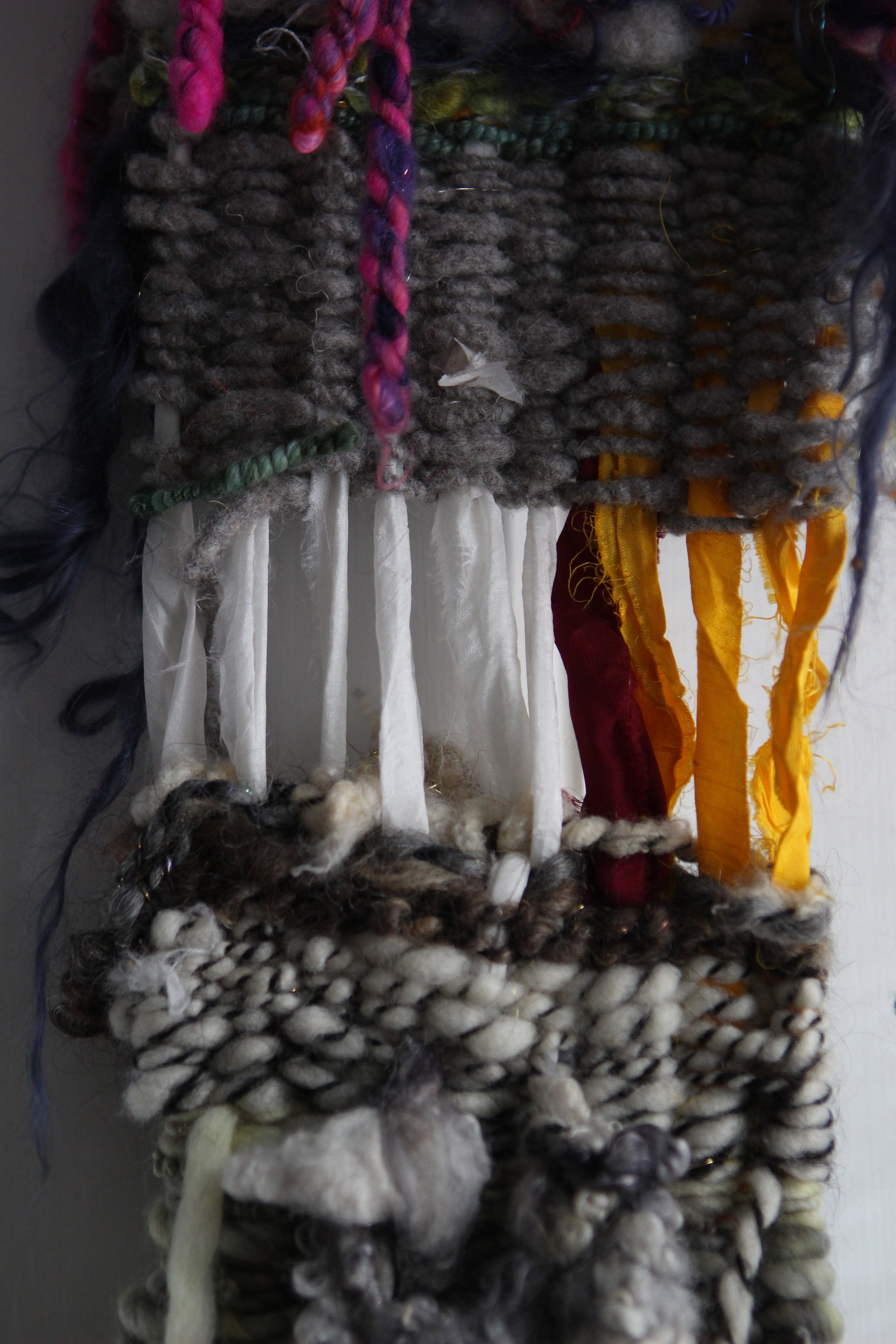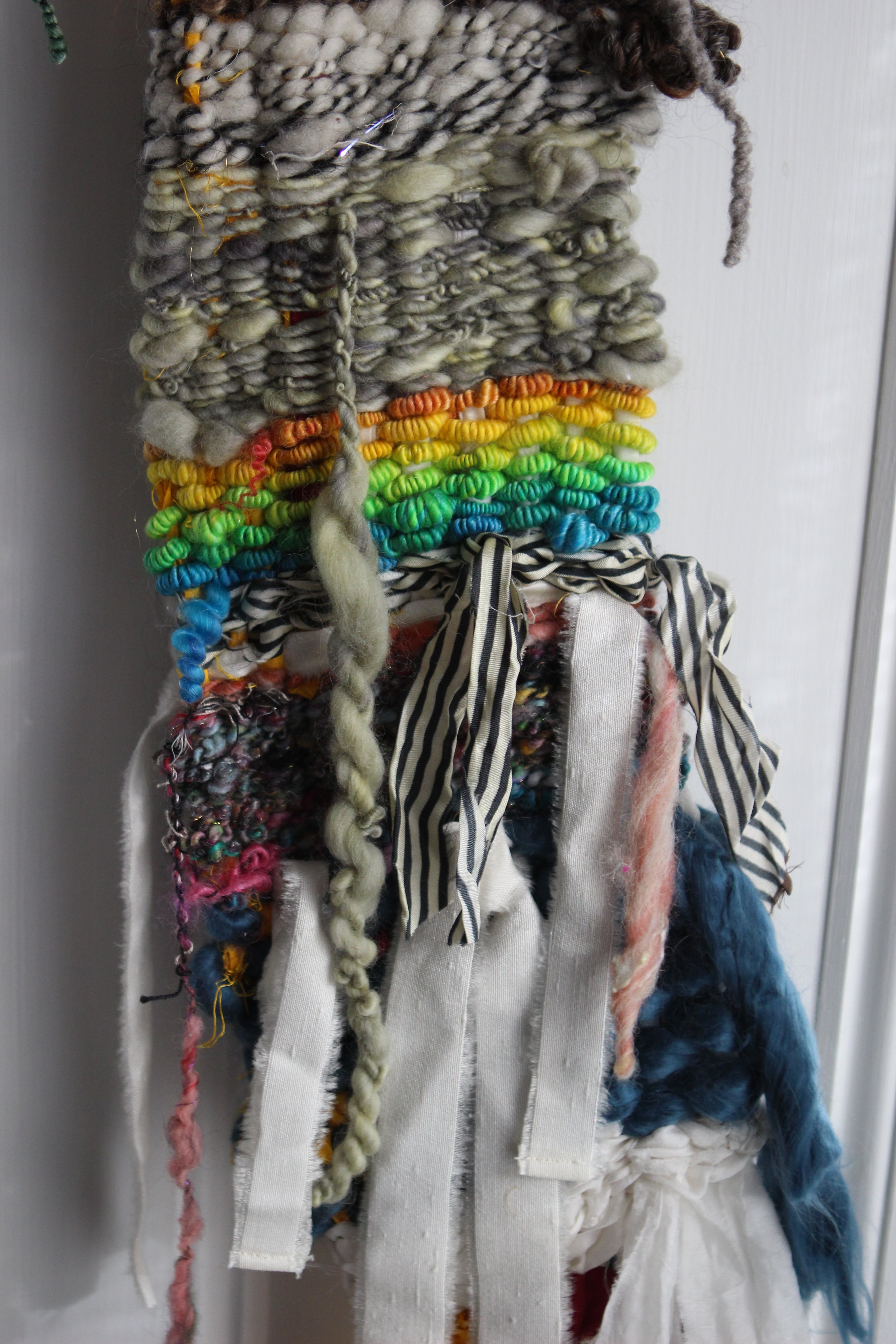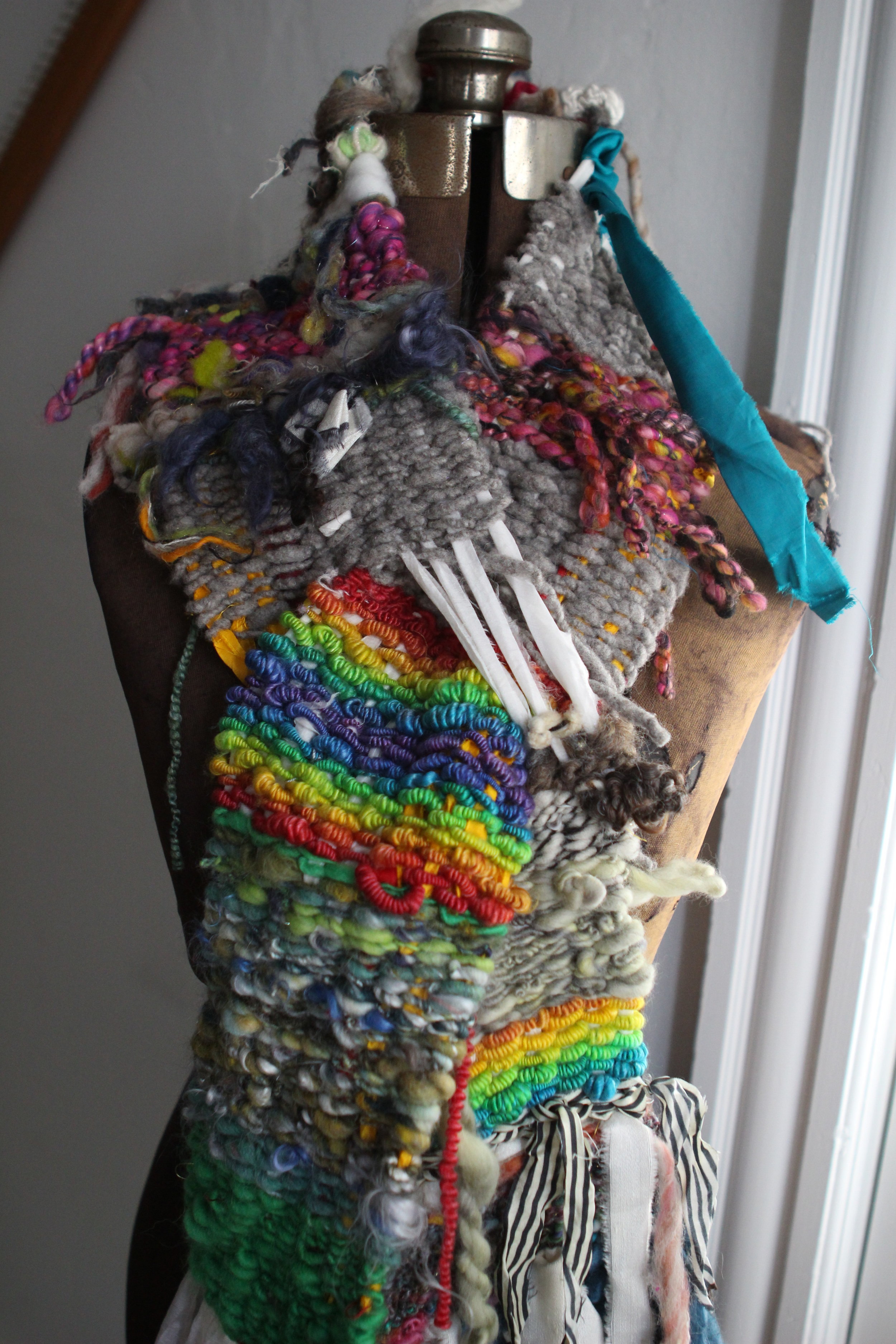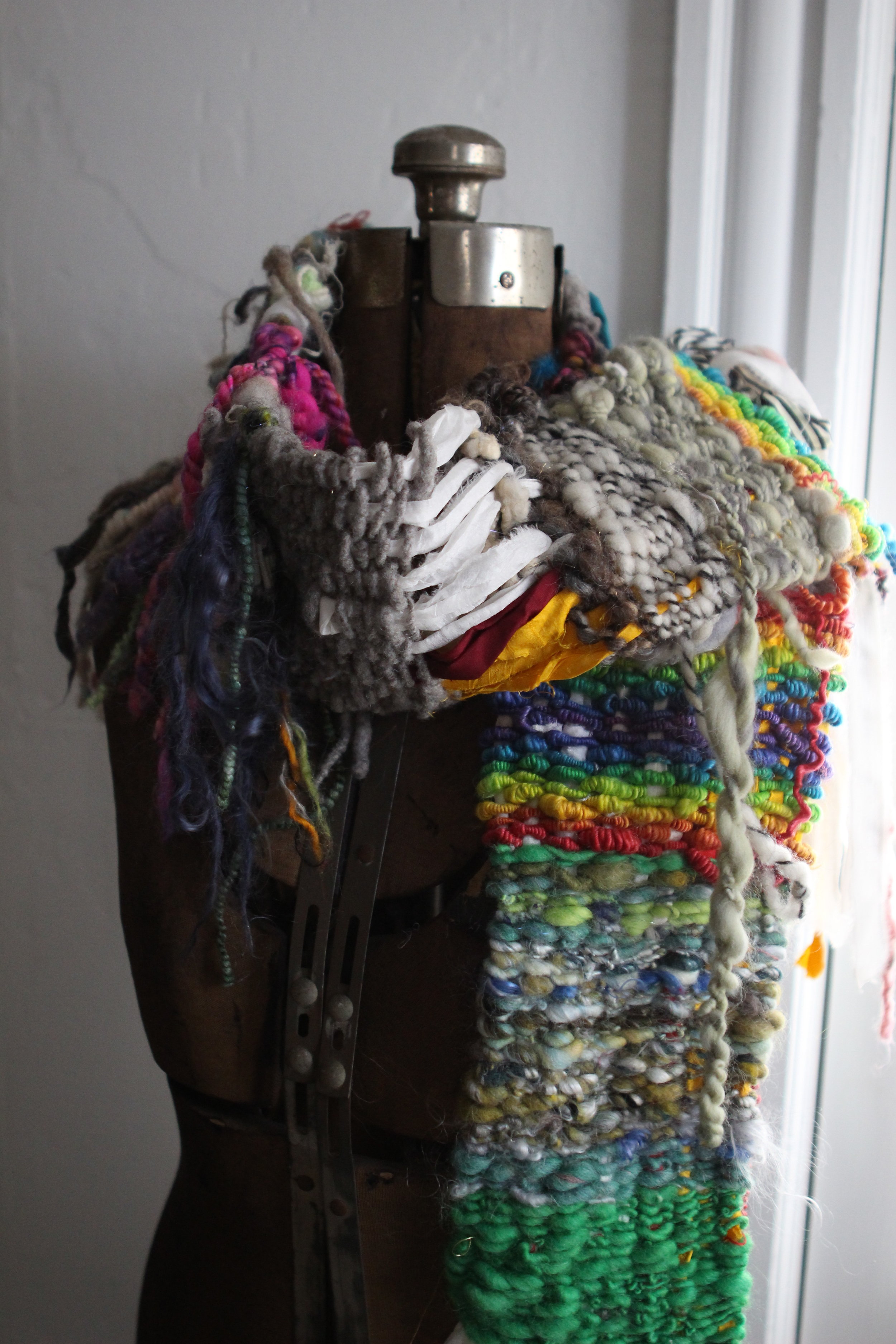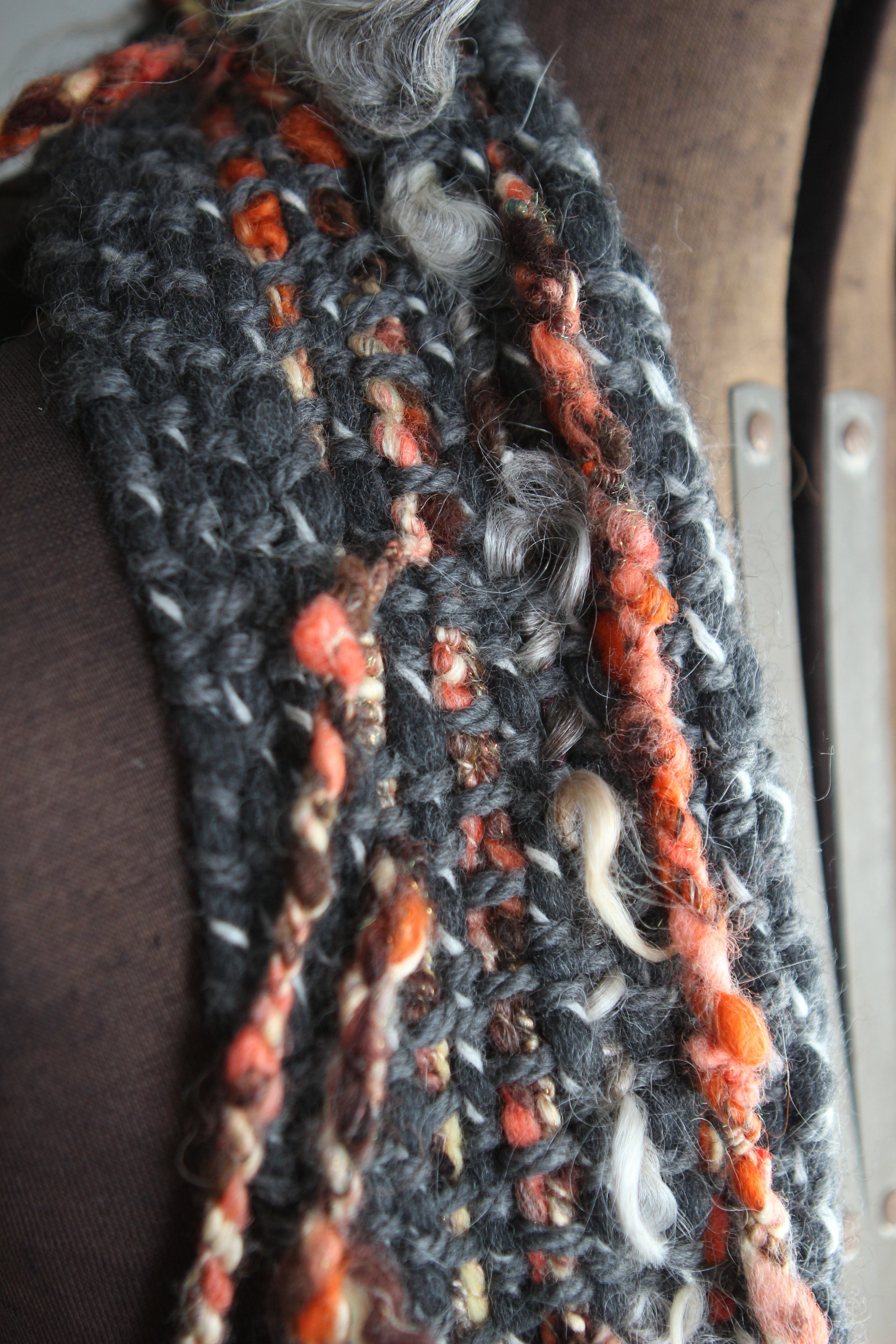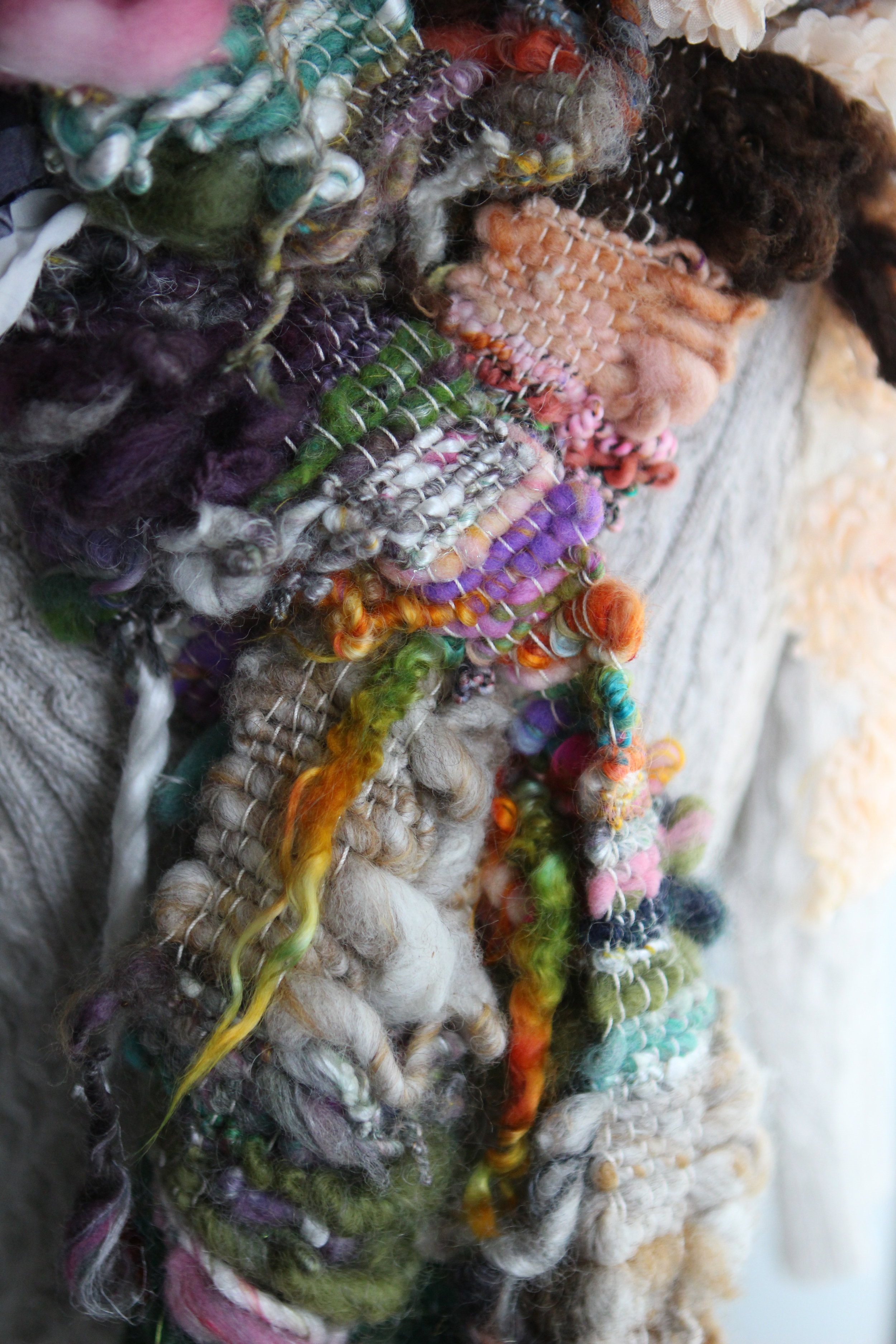Article & Pattern Provided by Mary Berry
Beautiful yarn makes stunning clothing. When you aren’t sure what to weave next, weave yardage!
Less than three yards in a finished width of 18” was used in this long wooly vest constructed of only two pieces. The shawl collar was picked up and knit on large needles to allow the yarn plenty of space to fluff.
Warp: Jagger Yarn Super Lamb 4/8 (Superwash Merino, Worsted Weight) in Graphite, 3 yards, 20” in the heddle.
Weft and Knitted Trim: Lock spun wool and mohair locks in mixed colors of gray and charcoal plied with a commercial yarn in silver with tiny sequins.
When weaving with bulky hand spun yarns, the best way to handle cut edges is to straight stitch twice on both sides of the cutting line, cut between the stitching, then turn under a narrow hem along each cut edge and stitch again. This is particularly important on an edge where you plan to pick up and knit! Without this turned under hem, your picked up stitches could pull your stitching right off the edge, leaving a gap where your knitting connects to your woven piece.
Mary Berry owns the Fancy Fibers Farm and the Fancy Fibers Store. At the Farm, she raises spinning fiber on the hoof. At the Store, she teaches spinning, weaving, felting, dyeing, and rug hooking and sells all the fun stuff you need for those crafts. Her life goal is to entangle everyone she meets in the world wide web that is the fiber arts.








